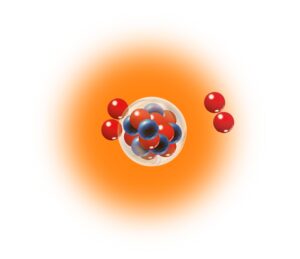
Introduction:
In the realm of food manufacturing, ensuring the authenticity and geographical origin of products is paramount. Fraudulent misrepresentation of a product’s origin can have serious implications for both consumers and producers. In combating this challenge, an innovative technique has emerged: oxygen isotope modeling. This cutting-edge method harnesses the natural variations in oxygen isotopes to accurately determine the geographic origin of food products, revolutionizing the way we authenticate and trace the journey of our food from farm to table.
Origin:
The concept of oxygen isotope modeling originated from the field of geochemistry, where it was initially used to study the Earth’s climate and past environments. Over time, its application expanded into various fields, including food science and manufacturing. Researchers recognized the potential of oxygen isotopes as natural tracers that reflect the geographical conditions in which plants grow, offering a unique fingerprint for each region.
Principle and Working:
At its core, oxygen isotope modeling relies on the principle that the ratio of oxygen isotopes (specifically, 16O and 18O) in plant materials is influenced by environmental factors such as temperature, humidity, and precipitation. These factors vary from region to region, resulting in distinct isotopic signatures for different geographical locations. By analyzing the oxygen isotope composition of a food product, scientists can match its signature to those of known regions, thus determining its origin.
The process involves collecting samples of the food product and subjecting them to isotopic analysis using specialized equipment. The obtained data is then compared to reference databases or models that correlate oxygen isotope ratios with geographic locations. Advanced computational algorithms are employed to interpret the data and pinpoint the most likely origin of the sample based on its isotopic signature.

Advantages:
- Accuracy: Oxygen isotope modeling offers a highly accurate method for determining the geographic origin of food products, providing valuable insights into their authenticity.
- Non-Destructive: Unlike traditional methods that may involve destructive testing, oxygen isotope analysis can be performed on small sample sizes without altering the product’s integrity.
- Cost-Effective: With advancements in technology and modeling techniques, oxygen isotope analysis has become more accessible and cost-effective, making it a viable option for food manufacturers and regulatory agencies.
- Traceability: By establishing a clear link between a product and its geographic origin, oxygen isotope modeling enhances traceability throughout the supply chain, bolstering consumer confidence and transparency.
- Prevention of Food Fraud: Oxygen isotope modeling serves as a powerful tool in combating food fraud by accurately verifying the geographical origin of food products. By establishing a clear link between a product and its authentic origin, this technique helps identify and deter fraudulent practices such as mislabeling or counterfeit production. Consumers can trust that the food they purchase is genuine and ethically sourced, fostering greater transparency and integrity within the food industry.
Disadvantages:

- Limited Applicability: Oxygen isotope modeling may not be suitable for all food products, particularly those that undergo extensive processing or refinement, as the isotopic signature may be altered or obscured.
- Resource Intensive: Building and maintaining reference databases for different regions requires significant time, effort, and resources, posing a challenge for widespread implementation.
- Complex Interpretation: Analyzing and interpreting isotopic data requires specialized knowledge and expertise, limiting the accessibility of the technique to trained professionals.
- Environmental Variability: Natural fluctuations in environmental conditions, such as climate change, can affect the isotopic composition of plants, potentially complicating the interpretation of results.
- Despite these challenges, the potential of oxygen isotope modeling in food manufacturing remains undeniable. As technology continues to advance and our understanding of isotopic processes deepens, this innovative technique holds promise for transforming the way we authenticate and safeguard the integrity of our food supply.
The Special Issue “Isotopic Techniques for Food Science” in Molecules addresses the increasing importance of analytical verification for food safety, quality, authenticity, and traceability. Stable isotope ratio analysis (SIRA) has emerged as a key technique for verifying the authenticity of both animal and plant-based foods.
Key Highlights of Oxygen Modeling Food industry : - Milk and Dairy Products: Studies show that isotopic analysis can distinguish milk products from different regions, although similarities in feed type and farming practices can affect differentiation. Isotopic composition in milk fatty acids serves as a biomarker for authenticity and regional traceability, with Alpine and Mediterranean regions producing milk with higher nutritional value.
- Development of New Methods: Research focuses on defining standard deviations for stable isotope ratios in vinegar, correcting isotopic ratios affected by fermentation water in alcohol production, and using δ18O values in lactose to detect milk adulteration.
- Assessment of Brazilian Food Market: A study provides insights into the isotope composition of carbon and nitrogen in Brazilian food and beverages, revealing the presence of C4 plants and aiding in authenticity studies and human anthropology.
- Authenticity Assurance in Mediterranean Products: Several papers explore the use of stable isotopes, elemental profiles, and fatty acid composition to authenticate products like Moroccan argan oil, Portuguese meat from Iberian black pigs, and Slovenian truffles. These studies support the REALMed project, promoting traditional products and sustainable development.
- Geochemical Fingerprinting: Isotope analysis of heavier elements such as strontium (Sr) and lead (Pb) helps trace the geographical origin of food products, as seen in wine and truffle studies. However, challenges exist in interpreting Sr isotopes due to complex environmental factors.
- Bioactive Compounds in Authentication: Phenolic compounds in Mediterranean plants could also serve as authentication markers, but further research is needed in this area.
- Open Access and Data Sharing: Some studies provide raw data openly, supporting platforms like METROFOOD-RI research infrastructure and FNS-Cloud, facilitating data comparison and interoperability.
- Overall, the Special Issue serves as a valuable resource for researchers and stakeholders interested in using isotopic techniques for food authenticity and origin verification.
- For more News click here 👇 👇
- https://foodycareers.com/category/news/
- For Food related jobs click here👇👇
- https://foodycareers.com/category/jobs/
- Join our whatsapp group for daily updates🔔👇👇
- https://chat.whatsapp.com/CftSlEtozGULLqjIzbpOVL
- Join our linkdin Page for quick updates 👇
- https://www.linkedin.com/company/96661258/admin/feed/posts/
